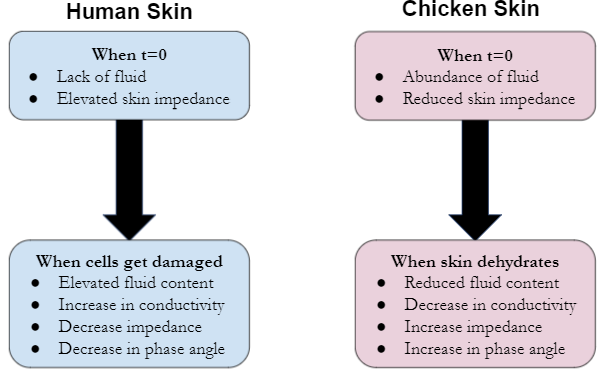When determining the functionality of the device, it would be unethical to induce a pressure injury on human skin. Therefore, chicken skin was used to observe the impedance and phase angle in relation to moisture content. Human skin developing a pressure injury is expected to behave oppositely of chicken sky dehydrating, which will be explained in more detail below.

Human skin developing a pressure injury would initially start with an elevated skin impedance. Also, an initial lack of fluid would insinuate an initially elevate phase angle as well. As the cells get damaged from a pressure injury, the cellular membranes begin to degrade, releasing ion-rich cytoplasmic fluid. This increase in ionic fluid leads to an increase in conductivity and therefore, a decrease in impedance. Similarly, more fluid and tissue degradation also leads to a decrease in phase angle.
Oppositely, chicken skin dehydrating would initially start with a reduced impedance and phase angle that would increase with time. Because the chicken skin was purchased from a grocery store, all of the cells were already dead, showing that no further damage can occur, meaning the impedance can only increase. As the skin dehydrates, the water evaporate, reducing the fluid content, in turn increasing the phase angle. Also, this decrease in fluid leads to a decrease in conductivity and increase in impedance.